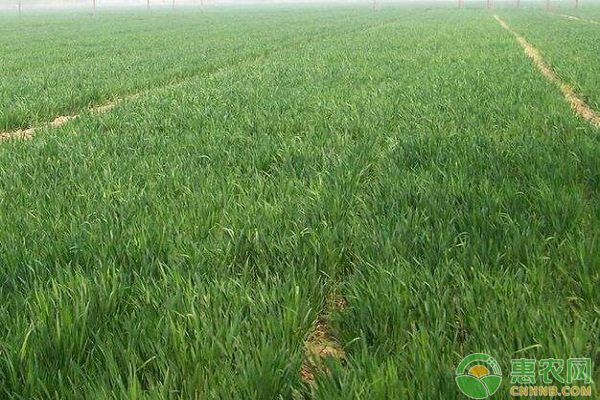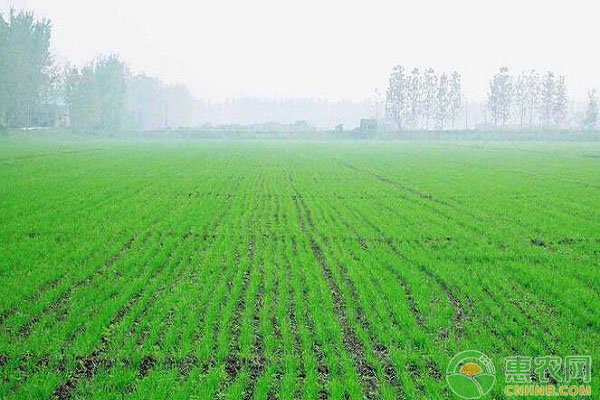Wheat is one of the main grain crops planted in China. It has a long history and is one of the main crops in Xinjiang. Wheat should be managed at any stage of cultivation during cultivation to increase the yield and quality of wheat. This article will analyze and explore the high-yield cultivation techniques of spring wheat in Xinjiang.

First, the introduction of spring wheat
According to the planting season, the wheat varieties can be divided into spring wheat and winter wheat. Spring wheat is generally suitable for planting in colder winter regions, such as the northwest and northeast regions. The winter is very cold and the soil is frozen, which is not suitable for crop cultivation. Spring wheat is generally a spring-harvest autumn harvest mode. The sowing time is concentrated in the end of March to the beginning of April every year, and harvesting begins in the middle and late July. Due to the short production season, spring wheat is mainly cooked once a year. The main producing areas of spring wheat in China are Heilongjiang, Hebei, Xinjiang, Gansu and Inner Mongolia. The spring wheat has strong drought resistance, short stigma and short growth period, but the taste is short. It is slightly worse than winter wheat. The special climate and geographical environment of Xinjiang are special, the summer is hot, the light is very abundant, the winter is cold, and the annual rainfall is less. In recent years, the agricultural planting structure in Xinjiang has been continuously adjusted, and the variety of agricultural products is becoming more and more abundant. The main crops in Xinjiang are wheat, corn, cotton, melon and so on. In terms of wheat cultivation, due to the special local climatic conditions, it is decided. local wheat to spring wheat mainly spring wheat as one of the region's major crops, acreage is very extensive, cultivation technology innovation.
Second, spring wheat cultivation techniques
1. Seed selection and processing
In order to increase the yield of wheat and achieve high yield and super high yield, it is necessary to improve the quality of wheat seeds. Only the basis of good sowing and strong seedlings can improve the level of wheat production. Due to the relatively dry and low rainfall in Xinjiang, it is necessary to select resistant varieties when selecting wheat varieties, such as Xinchun No. 6, No. 17 and No. 11, etc. These wheat varieties are resistant to lodging, water and fertilizer resistance, Planting in Xinjiang has great potential for increasing production. In addition, the fullness and evenness of wheat seed development of wheat directly affect the population, at the time of selection must ensure that the seed filling evenly, provide the basis for high yield cultivation. After the selection, the seeds should be treated in time. The wheat seed treatment includes several processes such as sun-cultivation, seed dressing and coating. Before planting, choose sunny weather for sun-dried seeding. The general drying time is 2-3 days. Due to the sufficient light conditions in Xinjiang, it provides good conditions for sun-breeding. When the seeds are sun-dried, the seeds are turned over in time to ensure even drying. Secondly, seed dressing is required. Seed dressing is a process for controlling common diseases of wheat, such as smut and sheath blight, which is susceptible to infestation at the seedling stage, and can be effectively prevented by chemical dressing. . Third, seed coating. Conditional agricultural growers will coat the wheat seeds, that is, the seeds will be put into the medicine for stirring. In the coating process, the ratio of the medicament is 70m L of the vital liquid, 5kg of water, 50kg of wheat seeds, and the coating. After drying, it can be used for normal sowing.
2. Sowing
In the process of wheat planting, precision sowing should be carried out, and weed management should be carried out in time to prevent weeds from affecting wheat growth. Precision seeding can increase the emergence rate of wheat, make the emergence of wheat tidy, uniform emergence and uniformity are the basic requirements in the process of wheat planting. It is necessary to ensure balanced nutrition during wheat planting and ensure the development of each individual in the wheat population. Neat and consistent. Specifically, in view of the special situation in Xinjiang, it is necessary to take out the frozen clods in the soil in time when planting, at least to ensure that the average temperature of day and night is above zero, so that it can be planted, and the topsoil that is not too deep is frozen. It is usually most suitable for planting from late March to mid-April. Sowing process to the local terrain conditions, select a specific sowing methods based on, for some slope relatively large area, you can choose four ditch six lines of approach to furrow sowing, to ensure that wheat seeds can absorb plenty of moisture, improve the yield and quality; If the land is flat, it can be planted with small alfalfa. Generally, the width of the small alfalfa is controlled at about 180cm, and the seeding rate per mu is 28-30kg. If the sowing amount is too large, the density of wheat will be too high, which will affect the growth effect of wheat.

3. Water and fertilizer management
Fertilization management is also a key task in the process of wheat planting. During the wheat planting process, the amount of fertilization directly affects the nutrient supply level of wheat. Excessive fertilizer may lead to burning of seedlings, side effects on wheat, and too little fertilizer to satisfy wheat growth. The nutrients needed in the process. Fertilizers and top dressing fertilizer comprises two steps, Fertilizers is fertilizing the soil before sowing, improved soil processes, to basal mainly nitrogen and phosphorus, per mu of land by the use of dicalcium phosphate and tri-phosphorus mixed feed amount of five kilograms so, due to the local farming industry is relatively developed, so it can use sheep manure as organic fertilizer, the use of 15-25kg per acre sheep manure to improve soil nutrients. When fertilizing, it is advisable to control the depth of fertilization to 8-10cm. When fertilizing, seeds and fertilizers should be processed in a wrong way. With the continuous growth of wheat, the demand for increasingly high nutrient elements, the total amount of nitrogen, phosphorus and potassium absorbed also increases, so the process should also be planted in increasing amounts to a variety of fertilizers, for example in wheat From the jointing stage to the maturity stage, the ratio of NPK should be controlled at 1.2:1:1. When fertilizing, the soil should be measured to grasp the various nutrients in the soil. For example, some soil nutrients are unbalanced. In the process of planting, the nutrients lacking in the soil should be specially supplemented to ensure the soil. Balanced nutrients provide adequate, balanced nutrients for wheat growth.
Irrigation is the key to spring wheat planting management in Xinjiang. Due to the serious shortage of water in the local area, drip irrigation is used for irrigation during wheat sowing. If it is sowed, the canal should be excavated as soon as possible. The distance between the canals should be 25-30m. . Head water irrigation is very important for wheat growth. After the wheat is planted, the water is poured. When the wheat grows to one leaf and one heart, the head water is used for irrigation. Usually, the irrigation amount is 70-80 cubic meters per acre. Irrigation is To be uniform and sufficient, no water or no seedlings can be used. When drip irrigation, it can be combined with drip irrigation technology to ensure the full utilization of water and nutrients.
Third, pest control
In the process of wheat growth, various pests and diseases are prone to occur, which has an impact on the yield and quality of wheat, which in turn affects the efficiency of agricultural production. The main pests and diseases in the growth of wheat include sheath blight, wheat aphids, etc., and different methods should be adopted for different diseases, such as control of wheat sheath blight, 5% of Jinggangmycin or 15% of three can be selected. Oxazolone, sprayed during the jointing stage of wheat, the control of pests can be treated by means of predation by natural enemies, insecticidal lamp trapping, etc., to improve the control level of wheat pests and diseases.

In summary, wheat is an important food crop in China. Spring wheat is one of the main crops in Xinjiang. In the process of spring wheat planting, it is necessary to strengthen the control of cultivation techniques and improve the management of wheat cultivation, especially Do a good job in water and fertilizer management and continuously improve the yield and quality of wheat.
Digital Blood Pressure Monitor
Electronic smart digital Upper arm and Wrist Blood Pressure Monitor automatic.
we are manufacturer of Blood pressure monitor for more than 12 years, we can accept OEM/ODM as for your requirements.
More closer to our peoples' heart, so the result of measurement will be more accurate.
Main Feautures For Electronic Sphygmomanometer Automatic BP Machine Digital Upper Arm Blood Pressure Monitor:
· Measurement method: oscillometric method
· Display screen: LCE big digital display shows high pressure / low pressure / pulse
· Blood pressure classification: WHO sphygmomanometer classification indicates blood pressure health
· Intelligent pressurization: automatic pressurization and decompression, IHB heart rate detection
· Year/month/day time display
· 2*90sets of measurement results memory for two people; the average reading of the last 3 measurements for data comparison
· One button measuremment,automatic turn on-off for convenient operation
· Blood pressure value unit Kpa and mmHg for conversion (boot default unit is mmHg)
Comfortable cuff included
· voice broadcast function is optional,any OEM demand available
citizen blood pressure monitor:continuous blood pressure monitor:blood pressure monitor cost:costco blood pressure monitor:best blood pressure monitor for home use
Shenzhen Urion Technology Co., Ltd. , https://www.urionhealth.com